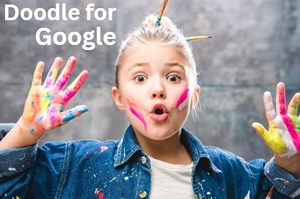Why Teachers Love Using Coloring Pages in the Classroom (and How to Use Them Effectively)
Coloring pages have long been a staple in classrooms—but their value goes far beyond keeping little hands busy. Today, teachers are using coloring activities to enhance learning, support development, and create calm, inclusive spaces for all students.
Whether it’s reinforcing a lesson or offering a sensory-friendly break, coloring pages continue to prove themselves as powerful tools in modern education. Here’s why so many teachers swear by them—and how you can use them more meaningfully in your classroom.
1. They Support Early Childhood Development
For young learners, coloring isn’t just fun—it’s foundational.
Coloring pages help:
Build fine motor skills – Strengthening the muscles needed for writing and scissors
Improve hand-eye coordination – Learning to stay within lines and choose colors
Develop pencil grip – A stepping stone to proper handwriting
Many teachers integrate coloring into early literacy and math centers because it’s a tactile way for children to engage while practicing control and focus.
Tip: Choose pages with bold outlines and large spaces for pre-K and kindergarten students.
For a closer look at why children love coloring and how it supports their growth, explore Twinkl’s blog on how colouring benefits children.
2. They Reinforce Educational Concepts
Coloring pages can double as visual learning tools.
From letter recognition to science diagrams, students absorb information while engaging their creativity. Many teachers use themed coloring sheets to support:
- Alphabet and number learning
- Seasons, animals, or life cycles
- Geography and planets
- Social-emotional topics like kindness or emotions
Example: A coloring page of the solar system can help students visualize planet order and scale—reinforcing science standards while offering a calming activity.
3. They Promote Focus and Mindfulness
Coloring has been shown to reduce stress, even in children. In classrooms filled with movement and stimulation, coloring provides a structured, peaceful task that encourages:
- Quiet concentration
- Self-regulation
- Transition time between lessons
Teachers often keep a stack of themed coloring sheets for:
- Early finishers
- Morning work
- Cool-down corners or reset breaks
If you’d like to understand how mindful coloring supports calm and focus, check out TeacherBot’s article on mindful coloring for students.
4. They Are Inclusive and Accessible
One of the biggest benefits of coloring activities is that they require no reading level, making them accessible to:
- English language learners
- Non-verbal students
- Students with learning differences or developmental delays
Teachers can also scale pages by complexity, offering simpler images for younger or lower-level learners, and more detailed options for advanced students.
Coloring creates a space where every student can participate and feel successful.
5. They’re Easy to Integrate Into Any Lesson Plan
Coloring pages are versatile and time-saving for educators.
They work well as:
- Lesson warm-ups or exit tickets
- Center station activities
- Homework extensions
- Holiday or event-based supplements
You can match them to any subject or theme, from Earth Day to Black History Month to class birthdays.
And unlike high-prep crafts, printable coloring pages take seconds to set up.
6. Free Resources Make It Even Easier
With access to high-quality, printable pages online, teachers don’t have to create materials from scratch.
Sites like Crayola, SuperColoring, SketchJoy, and many other ones offer a growing library of free classroom-ready coloring pages, including:
- Alphabet and number sheets
- Educational themes like planets, animals, or weather
- Holiday collections (Christmas, Thanksgiving, etc.)
- Pop culture and fun characters that students love
All pages are formatted as PDFs for A4 and Letter paper, and can be printed instantly—no sign-up required.
Bonus: You can even create mini “coloring booklets” for your students to take home or use in centers.
Final Thoughts
Coloring pages are more than just fun filler—they’re a quiet powerhouse in your teacher toolkit. From building motor skills to reinforcing lessons and creating inclusive, mindful classroom moments, they offer endless flexibility with zero prep stress.
If you’re looking to refresh your printable collection, check out our free educational and themed coloring pages at SketchJoy.com.
Happy coloring—your students will thank you!






